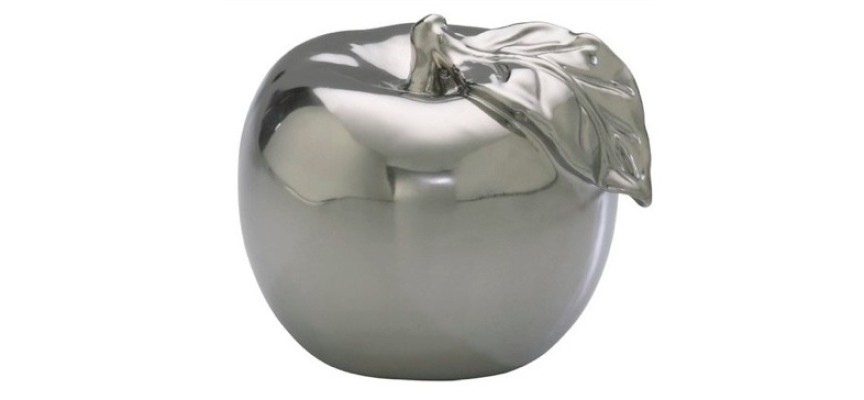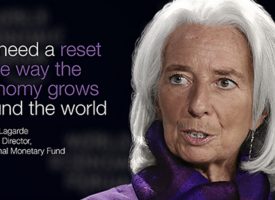Today one of the greats in the business predicted $20,000+ gold and also discussed the real reason why silver will skyrocket above $200.
Surging Gold, Silver And Commodities
August 29 (King World News) – Stephen Leeb: The pandemic, to state the obvious, is affecting the world in numerous ways big and small. It has generated plenty of commentary about where it all is leading. But to state something that may be less obvious, one of its most significant effects will be to speed up a shift in economic clout from West to East and more specifically from the U.S. to China. That has enormous implications for investors. They encompass three closely interrelated trends that already have begun to emerge but that will be accelerating: surging gold, rising commodities, of which silver may be headed for the largest gains.
The transition from West to East has its roots in China’s joining the World Trade Organization in 2001. Since then, China’s rise in the world has been dizzying. China’s superior success in getting back to business has positioned it to move full steam ahead with its Belt and Road Initiative, under the banner of which it is creating infrastructure in, and ties with and among, a large swath of developing countries. Recognize that infrastructure not only increases productivity and trade but is also one of the best ways of creating jobs. Renewable energies are among the most important areas of infrastructure spending.
Even if you are agnostic about climate change, renewables are critical for managing commodity scarcities. Moreover, with leading renewables like solar and wind under many circumstances now cheaper than non-renewables, they offer a way to control energy costs.A couple of important facts: Over the past decade, renewable energies have created about 11 million jobs globally. The dominant segment of renewables has been photovoltaics. And the dominant country in photovoltaics has been China.
A widening Chinese lead in the use of renewables and in control of renewable supply chains gives China, its Belt and Road Initiative, and the East overall a nearly unassailable leadership position in perhaps the world’s most important industry, energy. The recent collapse in fracking, another consequence of the pandemic, comes after more than a decade of losses that will likely tally up to at least half a trillion dollars. Matt Gallagher, head of Parsley Energy, one of the best performing stocks in the shale patch – and indeed among all energy companies – recently said: “I don’t think I’ll see 13 million bbl/d again in my lifetime.”
Translated, this means that nonconventional oil, even with a negative return on investment, joins cheap oil, i.e., oil produced in the Mideast, in peaking as solar and wind continue to burgeon. The pandemic, in other words, has further entrenched China – which is the leading importer of oil from the Mideast and whose refining capacity is burgeoning – as a key player in providing the world with energy. Equally consequential is that the pandemic has moved China further ahead in its ability to achieve another of its signal goals, a new monetary reserve system linked to gold. China’s preparation for a new monetary system has been in the works for more than a decade. And now we’re reaching the latter innings of this long-term game.
$20,000+ Gold
In my forthcoming book China’s Rise and the New Age of Gold, due out this October, I present these developments in detail, looking at how the world will be transformed in ways that will ensure commodity scarcities and a starring role for gold, propelling massive gains in gold that will dwarf those already seen, or ever seen, for that matter. Before this bull market in gold ends, gold will reach previously unimaginable levels – $20,000 and higher. These projections aren’t pulled out of a hat. They are based on what will be necessary to manage worldwide growth in the context of resource scarcities.
But something else is true as well, something that even the most dedicated gold investor should find intriguing and worth considering: The same developments that will be so favorable to gold also will benefit silver – which under some circumstances could even pull ahead of gold. And this makes silver investments a terrific companion to gold investments.
The Rise Of Silver
Like gold, silver has a long monetary history. But there are some obvious and important differences between the two metals.
One is that silver is far less scarce than gold, explaining why an ounce of silver will always have less value than an ounce of gold. It also helps account for why silver is less suitable as a monetary metal: to store the same amount of value requires storing far greater volumes of silver.
Another difference is that silver has many more significant industrial uses. That’s because silver has properties superior to those of other metals: including its better ability to conduct heat and electricity. Today, industrial uses account for about 50% of silver’s demand.
Silver’s use in renewable energies, and specifically in photovoltaics – by far the most important technology in solar energy – is particularly important and will be the fastest-growing source of rising demand for silver. Added to that will be demand stemming from silver’s use in virtually all electronic products, from mobile and desktop computers to the vast number of connections needed in the Internet of Things. But it’s photovoltaics that has the potential to dwarf other needs.
Today electricity supplies less than 20% of the world’s energy needs. That percentage will need to rise steeply to create a sustainable world. Why? Because electricity can be generated from renewable sources like solar and wind, lessening our dependence on finite (and dirty) fossil fuels (as well as on nuclear energy). Solar energy, which is the fastest-growing source of electricity, is particularly important. To ramp up electricity means ramping up solar power, mainly through photovoltaics.
And given silver’s essential role in photovoltaics, this means that one of the most important questions about the world’s future boils down to whether there will be enough silver to satisfy demand. It’s not hyperbolic to say it’s an existential question whether we will manage to satisfy most of our energy needs with electricity within a reasonable timeframe. Note that questions about climate change only relate to the timeframe – it is scarcity of stored energy supplies, i.e., hydrocarbons, that drives the ultimate existential issue.
Triple Digit Silver
I admit that about a decade ago I thought silver would be in triple digits by now. Technology temporarily proved me wrong, as between 2009 and the present the amount of silver needed to generate electricity fell by about 80%, in a process known as “thrifting.” Without that drop, it is likely silver would today be trading in triple digits.
To learn about one of the most exciting silver plays in
the world click here or on the image below

But the technological improvements allowing for the more efficient use of silver in photovoltaics have only postponed the inevitable. Nearly 90% of the fall in the amount of silver needed to generate a unit (watt) of electricity came between 2009 and 2016. Since 2016 the pace of reduction in how much silver is needed for photovoltaics has sharply moderated, suggesting we are approaching an absolute minimum.
The following calculations, underlying my conclusion that a major crunch in silver and multifold rise in silver’s price lie ahead, are based on data from a variety of sources. They include the International Energy Agency, BP, London-based consultancy group Metals Focus (whose yearly analysis is published by the Silver Institute), and data provided by the United States Geological Survey.
According to BP, photovoltaics accounted for an additional 100,000 megawatts of power in 2019 (1 megawatt = 1 million watts), or, to state it differently, 0.1 terrawatt of power (1 terawatt = 1 trillion watts). The electricity generated by renewables (wind and silver) amounted to about 2,800 terawatt hours. That was considerably less than the maximum consistent with the installed power. One obvious reason for this discrepancy is that you need to have enough power available to accommodate the maximum amount of electricity that might be needed at peak times of demand. Another reason is that storage of wind and solar power is not very efficient.
According to IEA estimates and BP, solar energy increased by about 100 terawatt hours in 2019. Photovoltaics accounted for the lion’s share of this. Going forward the scalability of photovoltaics suggests it will be the fastest growing source of power over the next generation and more.
As for the effect of this on silver, Metals Focus reports that the 0.1 terawatt in photovoltaics added in 2019 required about 100 million ounces of silver or approximately 2,850 tons.
Today the world uses about 162,000 terawatt hours of energy, requiring the equivalent of 18.5 terawatts of power. Electricity accounts for approximately 3 terawatts or less of power, less than 20% of the total. The IEA estimates that for the world to be on a sustainable energy path we will need more than 3 terawatts of solar power by 2040, the level it is projecting.
But this seems insufficient. With just 3 terawatts of solar, hydrocarbons not only would still be more important in electricity generation, but overall electricity would still account for only a bit more than 20% of total energy. A more realistic assessment is that to be on a truly sustainable path, the planet will likely need 7 terawatts of photovoltaics or more.
Either way, though, demand for silver will be shooting up. If you go with the conservative 3 terawatts projection, you’re talking about 81,000 tons of silver through 2040. That would add an average 4,000 or so tons to annual silver demand.
SILVER $200+: Supply Crunch Is Coming
And with 7 terawatts, the amount of silver needed rises to nearly 200,000 tons – a number that is 80% of current silver reserves and would add an average of 10,000 tons to yearly silver consumption. Consider on top of that the growing role silver will also play in applications such as IoT, not to mention investment demand for the metal, and it seems inevitable that even under the most conservative scenario silver is headed for a major crunch.
Projecting price targets is more of an art than a science. But as our table shows, in the last generation a 41% increase in yearly silver production – a 1.7% annualized rate – led to a more than threefold increase in the price of silver and 33% reduction in years of reserves. In 2019 photovoltaics added nearly 10% to silver demand. Assuming that 10% annual growth in silver demand will remain constant, which is conservative even relative to the low-end assumption for photovoltaics, it points to double-digit increases in silver demand throughout the next 20 years. Even assuming that technology over that period is able to reduce the silver content needed per watt by 50% or more, which is highly unlikely, a well measured price projection would be several times the increase in the past generation. A conservative long-term target for silver is well over $200.
KWN has now released this week’s an audio interview!
***To listen to the timely audio interview that includes price forecasts for gold and silver for the last few months of 2020 click here or on the image below.
This May Send Gold & Silver Prices Soaring
***ALSO JUST RELEASED: What Is About To Happen In Gold, Silver, And The Mining Shares Is Going To Surprise A Lot Of People CLICK HERE.
© 2020 by King World News®. All Rights Reserved. This material may not be published, broadcast, rewritten, or redistributed. However, linking directly to the articles is permitted and encouraged.











